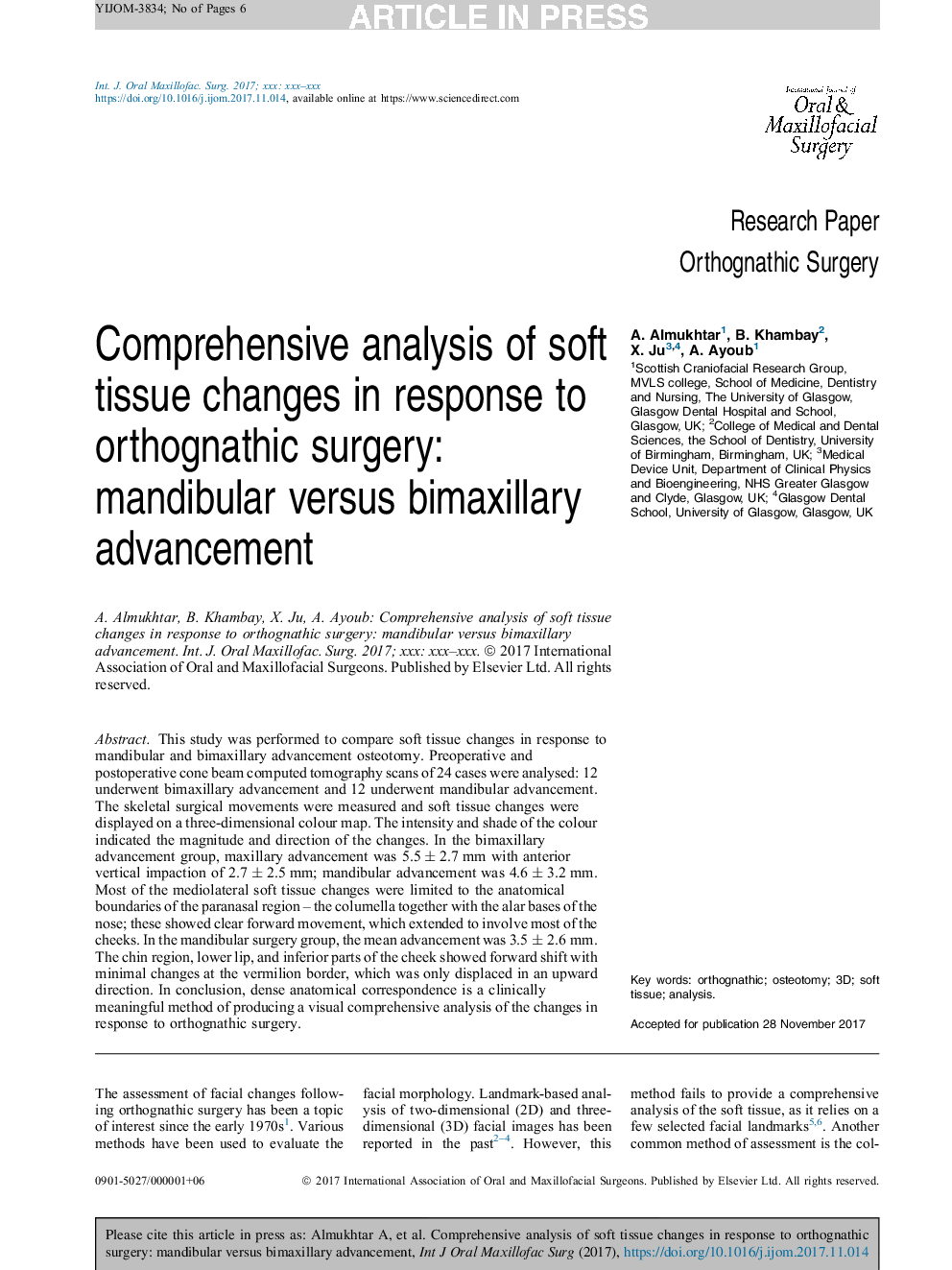| Article ID | Journal | Published Year | Pages | File Type |
|---|---|---|---|---|
| 8697803 | International Journal of Oral and Maxillofacial Surgery | 2018 | 6 Pages |
Abstract
This study was performed to compare soft tissue changes in response to mandibular and bimaxillary advancement osteotomy. Preoperative and postoperative cone beam computed tomography scans of 24 cases were analysed: 12 underwent bimaxillary advancement and 12 underwent mandibular advancement. The skeletal surgical movements were measured and soft tissue changes were displayed on a three-dimensional colour map. The intensity and shade of the colour indicated the magnitude and direction of the changes. In the bimaxillary advancement group, maxillary advancement was 5.5 ± 2.7 mm with anterior vertical impaction of 2.7 ± 2.5 mm; mandibular advancement was 4.6 ± 3.2 mm. Most of the mediolateral soft tissue changes were limited to the anatomical boundaries of the paranasal region - the columella together with the alar bases of the nose; these showed clear forward movement, which extended to involve most of the cheeks. In the mandibular surgery group, the mean advancement was 3.5 ± 2.6 mm. The chin region, lower lip, and inferior parts of the cheek showed forward shift with minimal changes at the vermilion border, which was only displaced in an upward direction. In conclusion, dense anatomical correspondence is a clinically meaningful method of producing a visual comprehensive analysis of the changes in response to orthognathic surgery.
Related Topics
Health Sciences
Medicine and Dentistry
Dentistry, Oral Surgery and Medicine
Authors
A. Almukhtar, B. Khambay, X. Ju, A. Ayoub,
